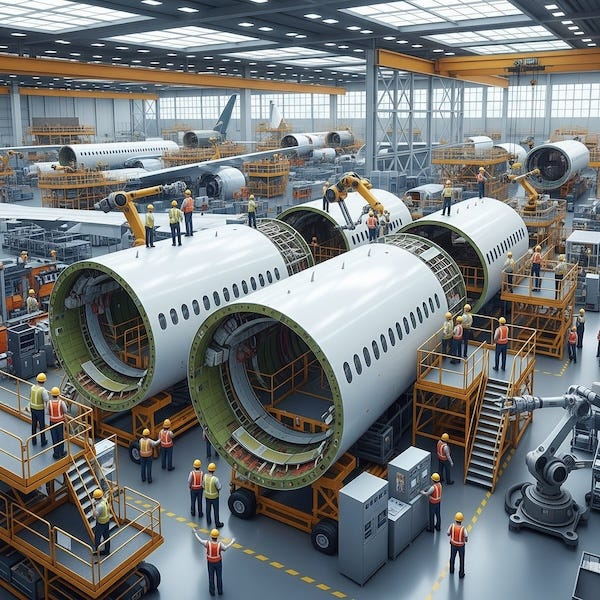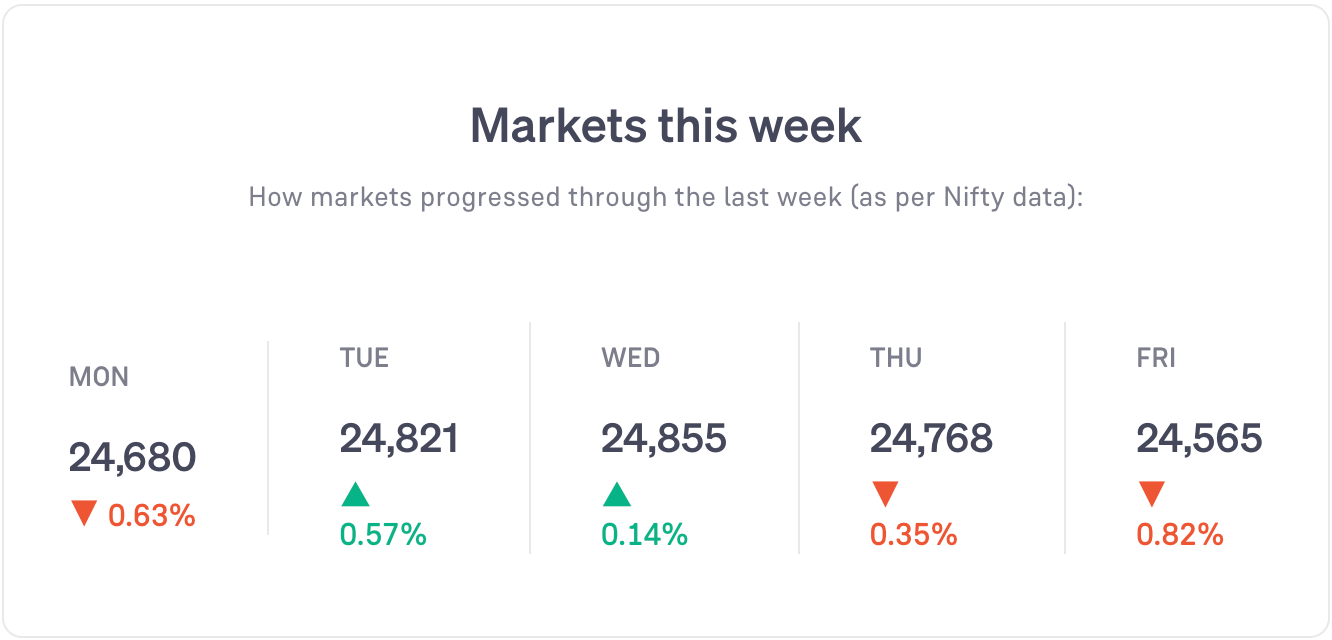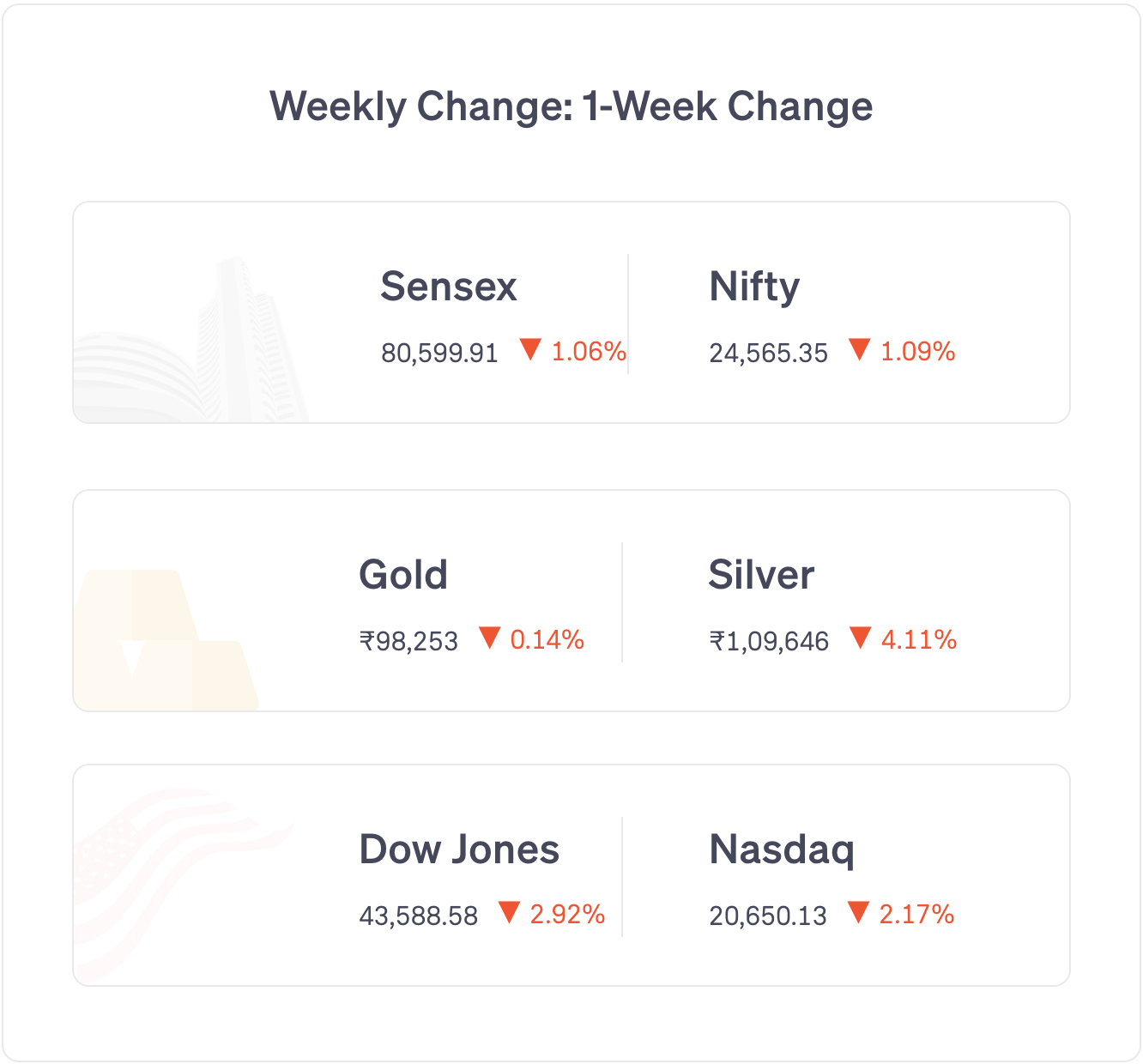Two tensed engineers looked at their measuring tapes.
June 2007.
A small gap. Just 0.3 inch (or, 0.76 cm).
This was the source of their worry – a major worry.
Only a month later, Boeing would show the new plane to the world.
One month after that, the plane was supposed to take flight for the first time ever.
And yet, two fuselage parts were not matching. The fuselage is the main tube-like body in which passengers sit. They are built separately and bolted together.
There was a gap of 0.3 inch.
This was Boeingʼs all-new plane – the Boeing 787.
It was announced in 2004. Literally weeks from the unveiling, engineers were struggling to put the body together.
To make matters worse, a media house managed to leak and publish this information.
Boeing executives came out in defense. They stated that this was a normal part of putting planes together. They expressed confidence in meeting deadlines: first appearance in July 2007; first flight in August 2007.
Today, thousands of Boeing 787 planes fly high in the skies.
The Boeing 787ʼs development story has now become an excellent case study of outsourcing – of both the downsides and upsides.
It encompasses everything from sky-high salaries, engineering challenges, cost-savings, skill, lay-offs, safety, and much more.
Concept Behind the 787
In the early 2000s, everyone knew Airbus was developing the A380 – the worldʼs largest passenger plane.
A full double-decker plane, the A380 could carry up to 800 passengers.
In the airline business, costs are calculated per seat basis. Bigger planes are more cost efficient per seat. So the A380 was predicted to be extremely efficient.
There was some sense of panic at Boeing. How would Boeing compete with a plane like that?
Boeing decided to adopt an entirely different strategy.
Like Airbus, they would also develop an all-new plane.
But, their way of making the plane more efficient was different. Instead of building a larger plane, they would make a regular-sized plane more efficient.
The 787 project was that plane.
The funny thing about this Airbus vs Boeing match, is that both won and lost this rivalry in different ways.
How was Boeing going to make the 787 more efficient?
One of the most revolutionary steps taken by Boeing was using carbon fibre to build more than 50% of the plane.
Nobody had used carbon fibre to this extent on a plane of this size. Some of the main structures like the wings and fuselage were to be built using carbon fibre. These critical parts used to be made with metals like Aluminum and Titanium, and their alloys.
They planned to move to lithium-ion batteries to save weight further. Sounds like a small step but it was not. Entire systems had to be rewired to work on this.
Further plans were made to improve the aerodynamics, and engine-efficiency.
Planning, Structure, & Outsourcing
The project would cost around $10 billion.
That price was incredibly high — even for an established plane-maker. The management worked aggressively to reduce costs.
Planes are never made by one company. They are made by a network of companies.
Companies develop the parts. Once developed, they outsource the manufacturing to a supplier company.
And sometimes, the supplier-company does a better job of developing those parts. In those cases, the parts are tested by Boeing to ensure everything works well together.
Outsourcing many parts helps companies reduce costs.
Toyota was a pioneer in this.
Every company wanted to study how Toyota had managed to ensure excellent quality while outsourcing so many parts to vendors and suppliers.
Boeing decided to lean heavily on outsourcing.
Their estimates suggested that the development cost of the 787 would come down from $10 billion to about $6 billion!
Aero-parts suppliers from all over the world were contacted.
Boeing wanted to offer them an interesting deal.
Under this scheme, many of the parts would be developed by them, not by Boeing.
And no, Boeing would not pay for the research and development. Instead, the suppliers would get a share in the profits that the plane sales would bring in.
Interesting model.
All companies would work on entire units that they would supply.
So, the company making the wings would send it with all the wiring, piping, etc already finished. The maker of the tail section would finish all the wiring, piping, etc.
At the end all of these parts of the plane would come together in Boeingʼs factory.
Boeing would clip it in – like a giant Lego-toy bricks.
A common computer server was shared.
All engineers from across different companies, countries, languages, and functions started working on this common computer – to ensure all plane parts fit perfectly.
Why Outsource
The idea was excellent.
Outsourcing worked well for Toyota, and countless other companies that followed that model.
The idea was simple: do the most important things in-house. Outsource the rest.
Computers are designed by companies like Dell, HP, Apple, etc. But they are made by someone else in China – often by companies most people have never heard of.
Foxconn, Pegatron, Wistron, Asus, and more.
Ikea does not make its own furniture.
Your Nike, Puma, Adidas shoes are not manufactured by them. Nor is your TV (most likely).
In fact, youʼd be surprised to know, even some cars are not made by the company whose logo is stuck on the hood.
Apparel, accessories, chemical products, food products – many everyday items are made by companies you have never heard of.
Outsourcing is a brilliant idea. It works.
Itʼs just that, in 2007, it was not working — for Boeing.
Early in July 2007, Boeing invited media persons to its factory. And there, a beautiful wide-body plane was pulled out of the hangar.
The world saw the Boeing 787 for the first time.
After the pictures were clicked, reports written, and interviews given, the plane was towed back into the hangar.
Inside what looked like a freshly manufactured and ready-plane was an empty shell.
The wiring was not done. The floor was missing. Many of its parts were stuck on with fasteners. And worse, they used wood to make parts — something that was obviously not a part of a finished plane.
Boeing executives still maintained that only a small amount of work was left; that the plane would fly for the first time in August 2007.
The plane flew for the first time in December, 2009 — over 2 years later.
What Went Wrong
A lot went wrong.
First, Boeing outsourced not just manufacturing, but also the research and development.
This coupled with the fact that engineers were in different locations, many times speaking different languages made it all too difficult.
The body parts that had a 0.3 inch gap. That was because of fittings.
It weighed down the entire frame and caused the fuselage to bend out of shape. They had to remove all the fittings again, put the fuselage parts, and redo the fittings like wiring, piping, flooring, etc.
Similar problems arose with many other parts.
Some suppliers were not equipped well enough to churn out enough parts. They took far longer than the plan.
Some suppliers were found to be further giving out contracts for making the parts instead of making it themselves.
Boeing had left a lot of specifications for the suppliers to decide. This meant that many parts were not compatible when being assembled.
This resulted in many engineers from suppliers visiting the Boeing factories and vice versa.
Eventually some suppliers were acquired by Boeing to improve the process – bringing those functions back inside the Boeingʼs factories.
There were over 50 suppliers across countries like the USA, Canada, the UK, Italy, Sweden, China, and South Korea.
About 70% of the Boeing 787 was outsourced outside Boeing.
Why Outsource
If someone is new to the concept of outsourcing, reading the above text might make outsourcing feel like a horrible idea.
Itʼs not – not always.
In fact, most of the times, it works exceedingly well.
Cost Savings:
One of the biggest reasons to outsource is saving on costs. Salaries are lower in developing countries. This is even more true in case of low-skill tasks.
The only reason why shoes and clothes brands prefer Asian countries for manufacturing is because of low salaries.
Some of the biggest jeans brands are made in Bangladesh, India, and South-east Asian countries. Same goes for shoes, sports equipment, and so on.
This remains true in case of more advanced products also. Wages are lower and that leads to direct cost savings.
Expertise:
This is quite the opposite of the previous factor.
Many times, companies do not have the expertise in-house and have to take the help of experts.
A classic example of this is car tyres. Practically no car-maker makes their own tyres. Tyres are made by specialising companies like Bridgestone, MRF, Michelin, Pirelli, etc.
Car, truck, and even plane-makers work closely with these companies to develop tyres.
Batteries of all kinds are another example.
One of the biggest car battery suppliers in the world is BYD who also make electric cars. Panasonic, Samsung, and LG are the biggest suppliers of batteries for consumer electronics.
There are similar examples in all kinds of industries including the pharma, IT, infrastructure, and more.
Both, cost and expertise:
This is a peculiar case but is happening more and more.
Many countries outsourced to China and other Asian countries because salaries were lower. Overtime, these workers became so good at their tasks, they were not only low-salaried, but also high-skilled.
Appleʼs CEO, Tim Cook, is famous for publicly saying that Americans do not have the skills to make certain Apple products even if he paid higher salaries.
Core Activities:
Many companies want to focus on the most crucial parts of their business. They outsource the non-crucial parts.
One of the easiest examples of this is marketing and social media. Most big-sized companies hire external agencies for some parts of advertising their products.
One of the biggest companies in the world, Nvidia, only designs chips. It does not make them. That is outsourced to TSMC.
Most consumer companies outsource customer support to BPO companies.
Efficiency, Productivity, Scalability:
Some companies are just very good at doing certain things. They are so good, they can be only matched by others who can do the same task.
A Chinese company called Midea makes microwave ovens for many well-known companies. Samsung, LG, and Sharp supply LCD panels to nearly all smartphone, laptop, and TV makers.
These companies serve so many clients, they have built their factories and supply chains to rapidly adjust to technical changes and demand fluctuations.
They can massively increase their output in short periods of time to meet rising seasonal demand.
The Not-So-Good Part
Loss of Jobs:
One of the biggest impacts is job loss.
Since the same workers are available cheaper when outsourced, companies tend to reduce the number of employees at their home.
When done gradually, it results in reduced new jobs. When done aggressively, it means lost jobs and lay-offs.
The UK company Dyson (famous for high-end vacuum cleaners) got a lot of flak for moving their production from the UK to Malaysia.
Loss of Control:
Because of aggressive outsourcing, many companies have effectively lost control of the process and the R&D.
They are dependent on their own suppliers to direct the product future. Essentially, they have become branding companies only.
Some Western computer and peripherals companies suffer from this challenge.
Lenovo and Asus are two computer companies that started off as outsource manufacturers but now also make their own branded computers effectively competing with their western clients.
Security & secrets:
This also results in their trade secrets being potentially leaked. Many of the suppliers are suppliers to competing companies also.
Loss of Skill:
This is one of the biggest drawbacks of outsourcing.
When done completely and for a long enough period, the skill gets wiped off from the company.
Since most executives in the company are focusing on something else, eventually, the people who knew the skills leave or are replaced by people with other skills.
Then, the company is connected to the supplier at the waist. It is impossible for a company to separate itself from key suppliers or even change suppliers.
If enough companies in a country outsource a certain task, in some years the skill vanishes from the country altogether.
High-skilled manufacturing jobs are not that common in the USA, for example.
Current Trends
You would have observed, many countriesʼ leaders are now focussing on being more self-reliant.
This is the opposite of outsourcing.
Loss of jobs, loss of critical skill, and over-reliance on foreign countries is the main driver for this.
This is especially showing up more defense and semiconductor industry skills.
The US President Donald Trump has been very aggressive about getting jobs back to the US. Other countries and regions like the EU, the middle-east, south-east Asian countries, and India have also been trying to get more manufacturing within their borders.
Outsourcing, and bringing jobs back is one of the biggest themes in global politics in this era.
Boeing 787
So, was the Boeing 787 a mistake?
No. But it was a rushed project.
Boeing tried to move too fast and paid the price for it. To fix the problems arising from rapid outsourcing, the company spent a lot more money than planned.
It spent more than the $6 billion it had initially planned. It spent even more than the $10 billion it had estimated cost them with lesser outsourcing.
But, the plane flew in December 2009.
And in October 2011, it flew with commercial passengers for the first time. By all metrics, the plane succeeded.
It was loved and has sold thousands of units since then.
Some glitches showed up. But they were ironed out.
Over the years Boeing managed to sort many of its issues out. It still outsources a huge portion of the 787.
Thatʼs normal. Even its rivals like Airbus outsource about 50-60% of their planesʼ manufacturing and parts.
The plane Boeing had feared – the super sized double-decker A380, was actually struggling. There werenʼt enough buyers for that plane.
Thankfully, Airbus too has a direct competitor to Boeingʼs 787: it is called the A350.
It too outsources about 50-60% of its manufacturing and has a spotless record.
Order books for both the 787 and the A350 run into years.
In Jun 2025, a tragic accident led to about 260 people losing their lives in a Boeing 787 in Ahmedabad. This was the 787ʼs first major crash.
This write-up is not intended to link the accident with Boeingʼs rushed R&D and manufacturing.
Nobody knows why the accident happened yet. It will be known when the final report is published.
This write-up on the Boeing 787ʼs manufacturing is solely intended to be about the outsourcing, its pros, and cons.
India
India is an aspiring outsourcing destination for the world.
This is why the central and various state governments are rolling out offers and PLIs for setting up of offices and factories.
As things stand today, there are such industries located in India.
One of our biggest outsource-exports is IT and BPO services. Mega-companies like TCS, Infosys, and Wipro are part of this outsourcing endeavour – among several smaller players.
India is also gaining traction in smartphone manufacturing with brands like Samsung, Apple, and various Chinese brands setting up assembly plants (via their supplier companies).
Pharma is also one of our major exports. Indian generics drugs are well known across the world.
Companies like Sun Pharma, Dr Reddyʼs, and Biocon are some names in this space.
India is home to some critical engineered parts suppliers. These range from automotive parts to even aero-industry parts. Samvardhana Motherson is one of the biggest auto suppliers with presence in India. Force Motors makes engines for companies like Mercedes and BMW.
Textile suppliers, leather suppliers, petroleum product suppliers — the list is long.
But given our population and income, there is a lot of room to grow more.
Long way ahead.
Quick Takes
+ The US and European Union have signed a trade deal, with the US imposing 15% tariffs on European goods.
+ India’s industrial production grew 1.5% year-on-year in June (vs 1.2% in May). Manufacturing sector grew 3.9% while mining and electricity sectors fell by 8.7% and 2.6% respectively.
+ The Ministry of Defence has signed an MoU to establish a cutting‑edge Mechanical & Material domain testing facility in the Tamil Nadu Defence Industrial Corridor at Tiruchirappalli. This is being developed under the Rs 400 crore Defence Testing Infrastructure Scheme to boost indigenous defence production.
+ Knowledge Realty Trust (KRT) received SEBI’s approval for a Rs 4,800 crore REIT IPO.
+ Amagi Media Labs applied for a Rs 1,020 crore IPO with SEBI.
+ RBI Digital Payments Index (DPI) rose 10% year-on-year to 493.22 in March (vs 465.33 in Sept 2024). The index reflects the extent of digital transactions in the country and it is published every 6 months (March and Sept).
+ Lenskart has applied for an IPO with SEBI. It includes a fresh issue of Rs 2,150 crore and an offer-for-sale.
+ Juniper Green Energy applied for a Rs 3,000 crore IPO with SEBI.
+ The Euro Area’s GDP grew 1.4% year-on-year in the second quarter of 2025 (vs 1.5% in the first quarter).
+ India, in collaboration with the US, successfully launched NISAR (NASA-ISRO Synthetic Aperture Radar Satellite) from Sriharikota, Andhra Pradesh. The earth observation satellite was a $1.5 billion collaboration between ISRO and NASA.
+ The RBI has set new limits on the investment of banks or NBFCs in Alternate Investment Funds (AIFs). From Jan 2026, a single bank or NBFC can invest only up to 10% of an AIF’s total fund size, and all banks/NBFCs together can invest only up to 20%. This has been done to prevent evergreening of loans and avoid concentration risk.
+ Indiqube Spaces got listed on the stock exchanges at a loss of 8.86% from its issue price and closed 8.03% down at the end of the day.
+ GNG Electronics got listed on the stock exchanges at a premium of 49.79% over its issue price and closed 40.67% up at the end of the day.
+ The US Fed kept interest rates unchanged in the 4.25% to 4.5% range.
+ The US President announced 25% tariffs on Indian imports, starting from 1 Aug, along with a ‘penalty’. He cited India's high tariffs, limited market access, and the purchase of Russian oil and weapons as reasons for this.
+ The Cabinet approved a Rs 2,000 crore grant-in-aid to the National Cooperative Development Corporation for a period of 4 years. With this, the NCDC will be able to raise additional funds upto Rs 20,000 crore from the open market for lending to the cooperative sector.
+ The Cabinet approved an additional Rs 1,920 crore for the ‘Pradhan Mantri Kisan Sampada Yojana’, bringing the total allocation to Rs 6,520 crore. The scheme aims to strengthen the food processing and preservation infrastructure across India.
+ Brigade Hotel Ventures got listed on the stock exchanges at a loss of 9.89% from its issue price and closed 5.2% down at the end of the day.
+ Aditya Infotech IPO has been subscribed 100.69 times. Retail subscription: 50.87 times. IPO closed for subscription.
+ India's gross GST collections increased 7.5% year-on-year to Rs 1.96 lakh crore in July (vs Rs 1.85 lakh crore in June). Net GST collections rose 1.7% to Rs 1.69 lakh crore.
+ India’s service exports rose 12% year-on-year to $32.1 billion in June (vs $32.5 billion in May). Imports rose 5% to $15.9 billion (vs $16.7 billion in May).
+ SEBI proposed significant changes to India’s IPO framework. It suggested reducing the retail investor quota in large IPOs (above Rs 5,000 crore) from 35% to 25% and increasing the allocation for qualified institutional buyers (QIBs) from 50% to 60%.
+ India’s manufacturing PMI rose to 59.1 in July (vs 58.4 in June). This means manufacturing activity rose more in July than in June.
+ India’s foreign exchange reserves rose by $2.7 billion to $698.19 billion in the week that ended on 25 July.
+ The Euro Area’s inflation rate was 2% year-on-year in July, the same as in June. Core inflation (excluding volatile items) also stayed unchanged at 2.3%.
+ Excelsoft Technologies got SEBI’s approval for a Rs 700 crore IPO.
+ NSDL IPO was subscribed 41 times. Retail subscription: 7.73 times. IPO closed for subscription.
+ Sri Lotus Developers & Realty IPO was subscribed 69.14 times. Retail subscription: 20.28 times. IPO closed for subscription.
+ M&B Engineering IPO was subscribed 36.20 times. Retail subscription: 32.55 times. IPO closed for subscription.
6-Day-Course
Theme of the week: quant investing
Question 1:
What is a key benefit of quant investing?
-Makes the highest returns
-Removes emotional bias
-Predicts future trends
Question 2:
_______________ models are so complex that even their creators may not fully understand how they make decisions.
-All quant
-White box
-Black box
Question 3:
Black box models are backtested on old data before being used for investing.
-True
-False
Question 4:
What can trigger a model’s kill switch?
-Repeated selling
-Rising prices
-A big sudden news
Question 5:
Arbitrage models aim to profit from price differences of the same asset on different exchanges.
-True
-False
Answers:
Q1: Removes emotional bias
Q2: Black box
Q3: True
Q4: Repeated selling
Q5: True
The information contained in this Groww Digest is purely for knowledge. This Groww Digest does not contain any recommendations or advice.
Team Groww Digest








